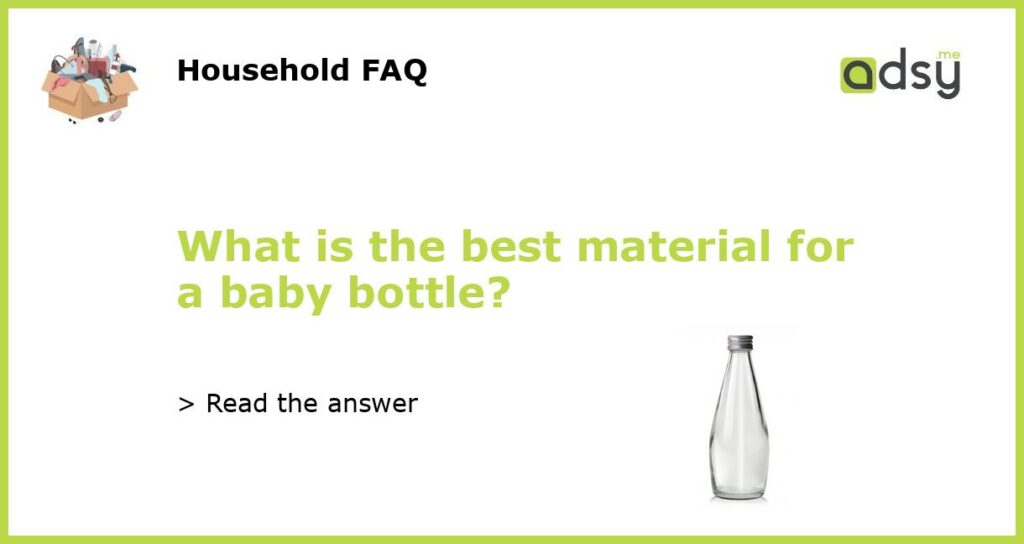Choosing the Best Material for a Baby Bottle
When it comes to feeding your baby, choosing the right bottle is essential. With so many options available in the market, it can be overwhelming for new parents to decide which material is best suited for their baby’s needs. In this article, we will explore the different materials commonly used for baby bottles and discuss their advantages and disadvantages, helping you make an informed decision.
Glass Baby Bottles: A Safe and Eco-friendly Option
Glass baby bottles have been around for decades and are a popular choice among parents. One of the main advantages of glass bottles is that they are BPA-free and do not contain any harmful chemicals that can leach into your baby’s milk. Glass bottles are also easy to clean and sterilize, ensuring a hygienic feeding experience for your little one. Another benefit of glass bottles is that they are environmentally friendly and can be reused or recycled.
Plastic Baby Bottles: Lightweight and Unbreakable, but Consider the Risks
Plastic baby bottles are lightweight and unbreakable, making them a convenient option for parents on the go. However, it is important to note that not all plastic baby bottles are created equal. Some plastic bottles may contain bisphenol A (BPA), a chemical that has been linked to health issues. To ensure that you are choosing a safe option, look for bottles labeled as BPA-free. It is also worth mentioning that plastic bottles may become stained or scratched over time, which can make them more difficult to clean.
Stainless Steel Baby Bottles: Durable and Insulated
Stainless steel baby bottles are a relatively new addition to the market but have gained popularity among parents. These bottles are durable, lightweight, and can withstand falls without breaking. They are also excellent at retaining the temperature of liquids, keeping them warm or cold for extended periods. However, stainless steel baby bottles tend to be more expensive than other options, and they may dent if dropped on a hard surface.
Silicone Baby Bottles: Soft and Easy to Grip
Silicone baby bottles are known for their soft texture and ability to mimic breastfeeding. The flexible design of silicone bottles can make it easier for babies to grip and hold the bottle independently as they grow. Silicone bottles are also lightweight and easy to clean. However, they may not be as durable as glass or stainless steel bottles, and they can be more expensive than plastic options.
Choosing the best material for a baby bottle ultimately depends on your preferences and your baby’s needs. Glass bottles are a safe, eco-friendly option, while plastic bottles are lightweight and convenient but may carry health risks. Stainless steel bottles are durable and insulated, while silicone bottles are soft and easy to grip. Consider the advantages and disadvantages of each material, and select the one that fits your requirements and provides the best feeding experience for your little one.






